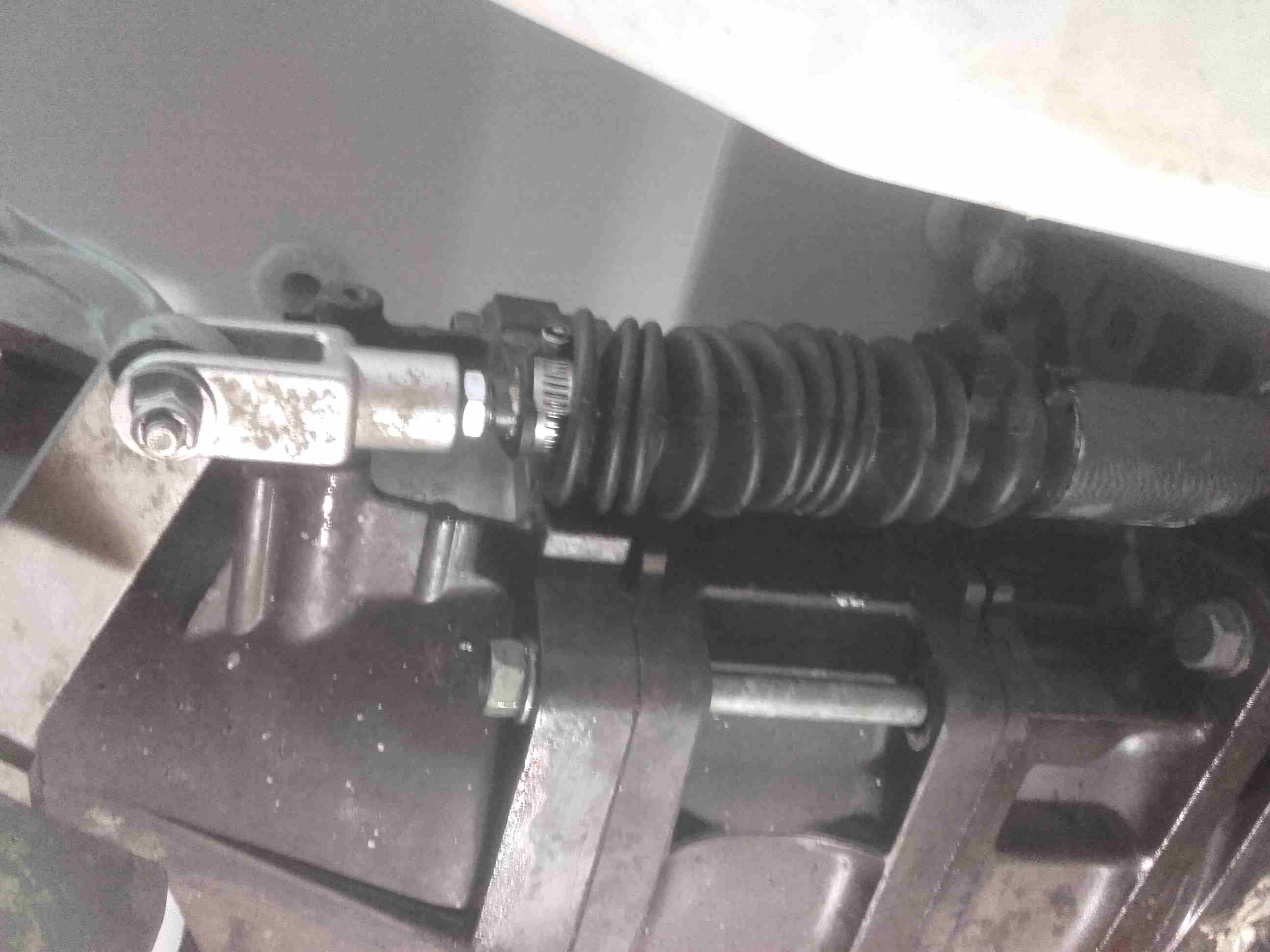scopeusa
Jet Boat Addict
- Messages
- 72
- Reaction score
- 39
- Points
- 107
- Location
- Providenciales
- Boat Make
- Yamaha
- Year
- 2008
- Boat Model
- SX
- Boat Length
- 23
Steering cables and Caribbean salt water!!!
As some of you know I tried a stainless steel compression fitting with a rubber seal fitted to the end of the cable in an attempt to seal out the water. This did not work for two reasons one the seal was not made out of the right stuff and I had ignored the problem of where the guide tube meets the outer cable adapter adjacent to the hull another potential salt water leak. This is a second attempt. I machined a piece of nylon 1 1/4" round stock to accept the cable nut as a tight push fit. The outer dia being the same as the outer dia of the bellows. I stepped it down to an 1" long enough to fit a nylon clamp and a zip tie. The other end needed a sleeve adapter machined to bring the diameter of the steering rod up to 3/8". This was internally tapped to allow it to be threaded on to the rod. The adapter end closest to the bellows was over bored to allow it to be sealed with 3M 4200. The outside of the adapter was given a course thread so that the screw clamp could grip properly. The transom end was over bored internally to allow 3M 4200 to bond and seal around the nut and bond the step in the cable before the steering rod guide tube. Silicon grease was injected into the bellows before fitting the screw clamp to give constant lubrication and hopefully work its way back up the guide tube with each operation of the steering.
Will it work ask me in a few months as to whether its holding up ask me in a year or so. If I do it again I would replace the nylon with SS 316 and machine a thread in it to replace the cable transom nut. I have an SX230HO I guess it might work for some other boats with similar cables.
As some of you know I tried a stainless steel compression fitting with a rubber seal fitted to the end of the cable in an attempt to seal out the water. This did not work for two reasons one the seal was not made out of the right stuff and I had ignored the problem of where the guide tube meets the outer cable adapter adjacent to the hull another potential salt water leak. This is a second attempt. I machined a piece of nylon 1 1/4" round stock to accept the cable nut as a tight push fit. The outer dia being the same as the outer dia of the bellows. I stepped it down to an 1" long enough to fit a nylon clamp and a zip tie. The other end needed a sleeve adapter machined to bring the diameter of the steering rod up to 3/8". This was internally tapped to allow it to be threaded on to the rod. The adapter end closest to the bellows was over bored to allow it to be sealed with 3M 4200. The outside of the adapter was given a course thread so that the screw clamp could grip properly. The transom end was over bored internally to allow 3M 4200 to bond and seal around the nut and bond the step in the cable before the steering rod guide tube. Silicon grease was injected into the bellows before fitting the screw clamp to give constant lubrication and hopefully work its way back up the guide tube with each operation of the steering.
Will it work ask me in a few months as to whether its holding up ask me in a year or so. If I do it again I would replace the nylon with SS 316 and machine a thread in it to replace the cable transom nut. I have an SX230HO I guess it might work for some other boats with similar cables.



